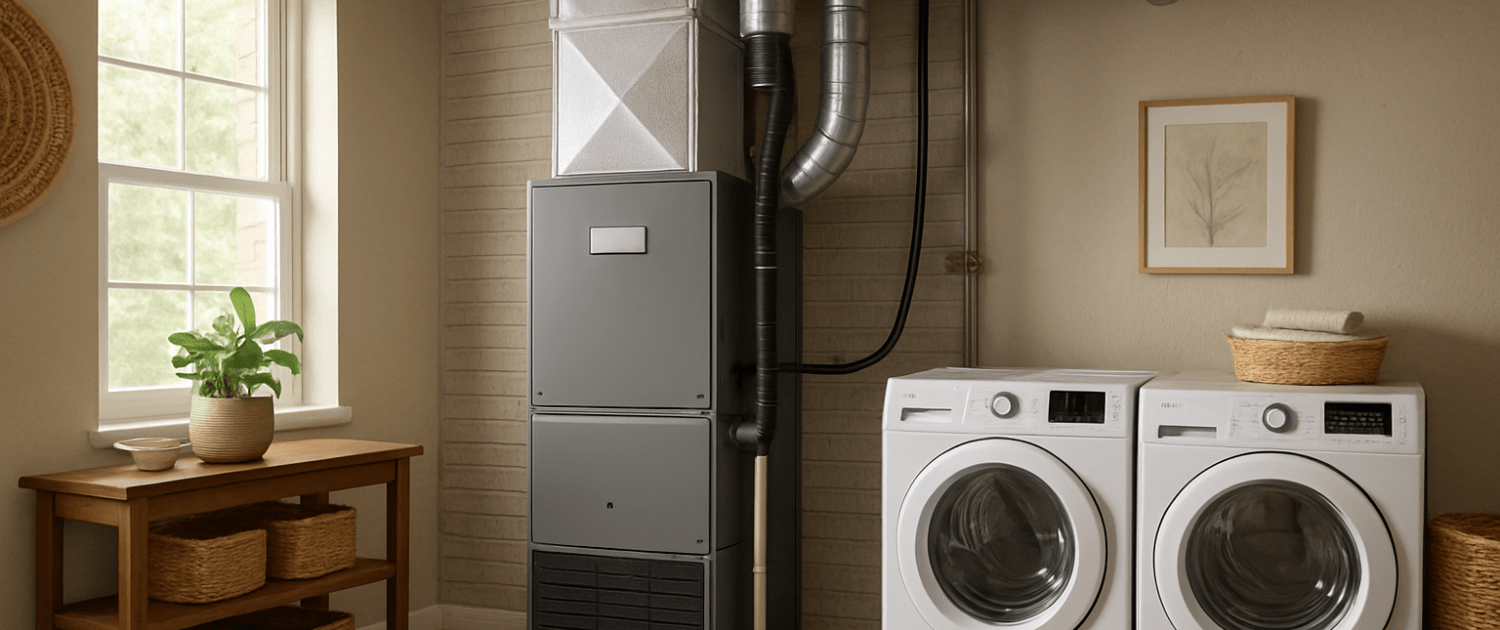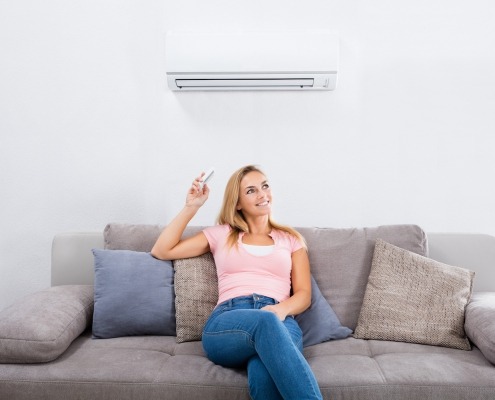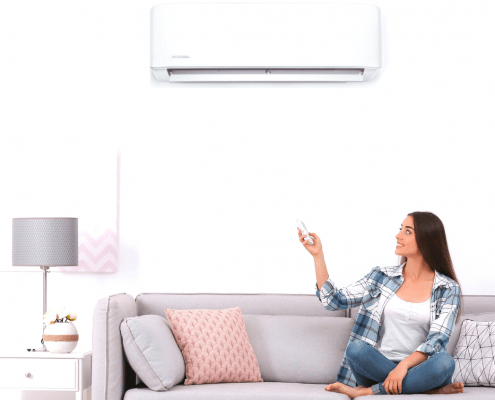Central AC Turns Off Too Soon? Here’s How to Troubleshoot It
Steven E / Thursday June 26, 2025
There’s nothing worse on a sweltering summer day than realizing your central air conditioning isn’t doing its job. Your thermostat says 78°F, you’ve set it to 72°F, but the system shuts off before your home ever gets there. You’re left sweating, frustrated, and wondering what’s going wrong. Fortunately, many of these problems can be identified and resolved without calling in a professional.
We’ll walk through the most common reasons your central AC may be shutting off prematurely, how to safely troubleshoot the issue, and what to do next to restore proper operation and comfort to your home.
The information in this article may not apply to your specific appliance model. We recommend consulting your manufacturer’s documentation or contact us with any questions.
Understanding How Your Central AC Should Operate
Before jumping into fixes, it helps to understand how a properly functioning central AC system works.
When your home’s indoor temperature rises above the thermostat’s set point, the thermostat signals the air conditioner to turn on. The system then runs a cooling cycle until the indoor temperature drops to the desired level. At that point, the system shuts off and waits until the temperature rises again.
If your AC is turning off before reaching the set temperature, it’s not completing a full cooling cycle. This can result in a home that never feels cool enough, and may also lead to short cycling, increased energy bills, and added strain on your system.
Now, let’s get into the potential causes.
1. Thermostat Placement or Malfunction
The thermostat is the brain of your HVAC system, and if it’s malfunctioning or giving incorrect readings, it may shut the system off early.
Signs to look for:
- Thermostat display shows a temperature that doesn’t match the room’s actual feel
- The system shuts off too soon or runs inconsistently
- The thermostat is located near vents, windows, or in direct sunlight
What to do:
- Relocate the thermostat if it’s near a heat source or cold draft. A thermostat near an AC vent can “think” the room is cooler than it really is.
- Replace the batteries if it’s a battery-operated thermostat.
- Try a manual override (if available) to test whether the problem persists.
- Check wiring connections. Loose or corroded connections can send false signals.
If none of these solutions work, replacing the thermostat with a newer or programmable model may help improve accuracy and reliability.
2. Clogged Air Filter
A dirty air filter restricts airflow, causing the system to overheat or shut off early due to poor air exchange. This is one of the most common and easily fixable issues.
Signs to look for:
- The filter looks gray, dusty, or clogged
- Airflow from vents feels weak
- The system turns on but quickly shuts off
- You haven’t replaced the filter in more than 1–3 months
What to do:
- Turn off the system and inspect the air filter.
- If it’s dirty, replace it with a new one (make sure it’s the correct size and type).
- Monitor system performance after the new filter is installed to see if the problem is resolved.
3. Frozen Evaporator Coils
When airflow is restricted or refrigerant levels are off, your AC’s evaporator coils can freeze over. This leads to premature shutdowns as the system struggles to operate properly.
Signs to look for:
- Ice buildup on the indoor unit or visible coils
- Reduced airflow from vents
- System short cycles (turns on and off quickly)
- Water dripping near the air handler when the ice melts
What to do:
- Turn off the system and let the coils thaw (this may take a few hours).
- Check the air filter and replace it if dirty.
- Inspect the return vents and supply registers to ensure they’re not blocked.
- If the problem returns, the issue may be low refrigerant or a malfunctioning blower.
4. Oversized AC Unit
Bigger isn’t always better when it comes to central AC systems. An oversized unit cools the room too quickly, shutting off before it can fully dehumidify and balance the indoor temperature. This leads to short run times, higher humidity, and inconsistent comfort.
Signs to look for:
- AC cools rooms very quickly but shuts off within minutes
- Frequent on-off cycles (short cycling)
- Rooms feel damp or humid despite being cool
- Higher energy bills due to inefficiency
What to do:
- If your AC unit was recently installed and you’re experiencing these symptoms, perform a load calculation to confirm whether the unit is properly sized.
- In some cases, you may need to add zoning, install a variable-speed air handler, or replace the system with one that fits your home’s needs.
Unfortunately, the only long-term solution to an oversized system may be replacing it with the correct capacity.
5. Dirty or Blocked Condenser Coils
Your outdoor condenser unit needs clean coils and unobstructed airflow to release heat. When these coils get dirty or blocked by debris, the system can overheat or trigger high-pressure safety shutoffs.
Signs to look for:
- Outdoor unit feels extremely hot during operation
- AC shuts off after a few minutes of running
- Visible dirt, leaves, or debris around the condenser
- Fan inside the outdoor unit struggles or sounds louder than usual
What to do:
- Turn off power to the unit at the breaker.
- Use a hose to gently clean the fins and coils, spray from the inside out if possible.
- Trim any nearby vegetation to allow at least 2 feet of clearance on all sides.
- Avoid using a pressure washer, as it can damage delicate fins.
6. Electrical Issues or Failing Parts
If your AC unit is shutting off due to electrical faults, it may be triggered by a tripped breaker, a worn-out capacitor, or a faulty relay.
Signs to look for:
- Breaker trips shortly after the system turns on
- A buzzing sound before the unit shuts down
- AC runs inconsistently and unpredictably
- Capacitor looks swollen or leaking
What to do:
- Check the circuit breaker and reset it if necessary. If it trips again, there may be an underlying electrical issue.
- Inspect the contactor and capacitor in the outdoor unit, if you’re experienced with electrical repairs.
Where To Find Us
If you need any replacement parts for your appliances, you can enter your model number at AppliancePartsPros.com to locate and order them quickly. Most orders arrive in just two business days, and we have tons of great information in our repair help section and YouTube videos to help you troubleshoot.
Stay connected with the latest DIY tips, tutorial videos, and repair guides by following us on Facebook, Instagram, and Twitter. We love hearing about your repair stories and successes. If you need more help or want personalized guidance, feel free to reach out. We’re ready to help you take on your next project with confidence!
With nearly a decade of experience in providing top-notch customer service regarding appliance parts and repair, Steven enjoys sharing practical advice, troubleshooting tips, and interesting information to help readers stay informed.




